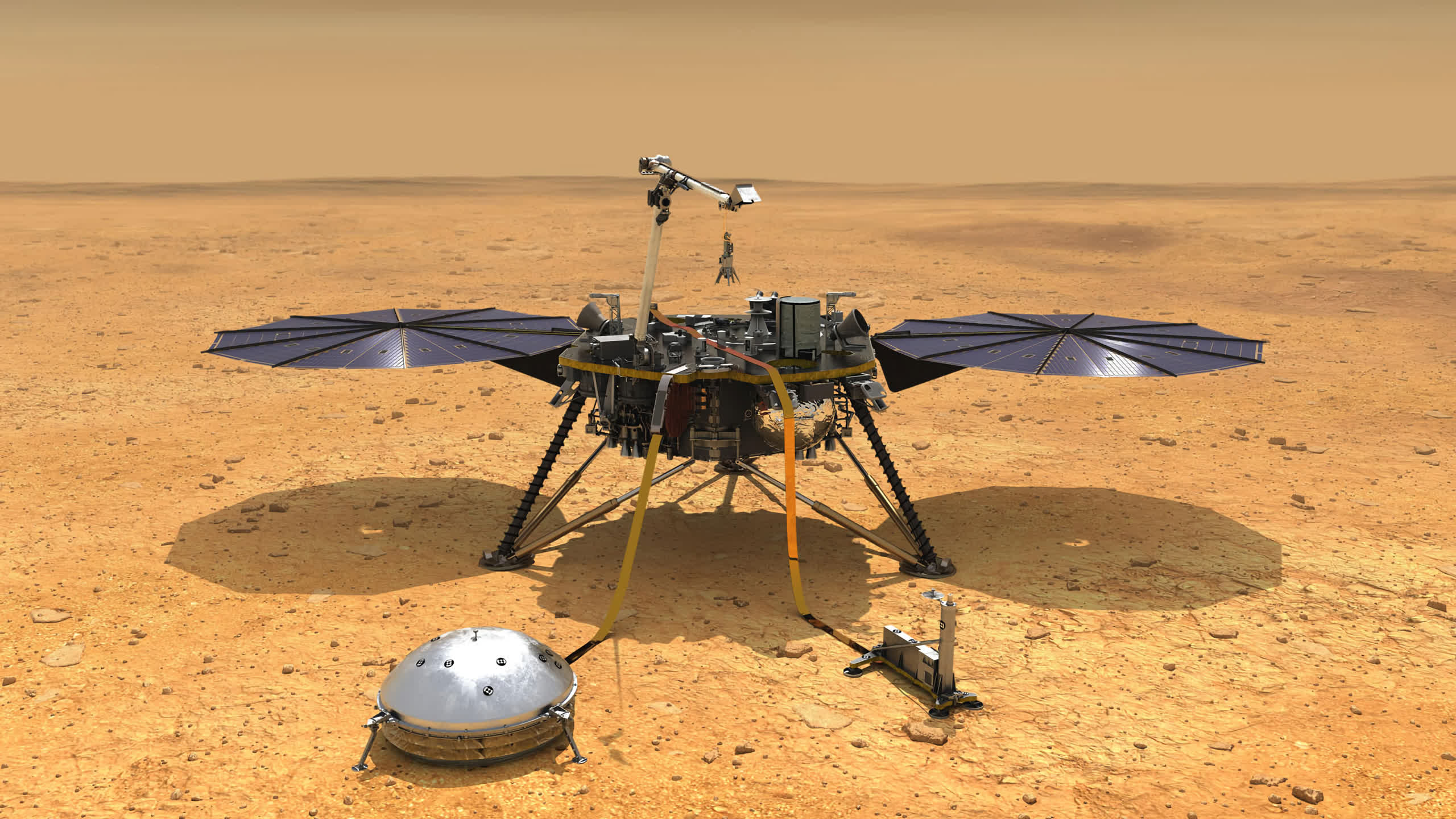In brief: The overall goal of the mission is to study the interior of Mars, and one of the tools that was supposed to help in this endeavor was a heat probe nicknamed “the mole.” The 16-inch-long pile driver is tethered to the lander and has temperature sensors embedded within. NASA aimed to use the tool to burrow down into the Martian surface to a minimum depth of at least 10 feet and record temperature data, but it simply wasn’t meant to be.

NASA has waived the white flag on one of its lander projects, conceding that the Martian surface simply didn’t react to the tool as intended.
The Interior Exploration using Seismic Investigations, Geodesy and Heat Transport (InSight) robotic lander launched aboard an Atlas V-401 rocket on May 5, 2018, and successfully touched down on the Red Planet on November 26, 2018.
The probe encountered issues almost immediately, and after several starts, stops and plenty of troubleshooting, the team was ultimately unable to reach a significant depth.
“We’ve given it everything we’ve got, but Mars and our heroic mole remain incompatible,” said Tilman Spohn, principal investigator of the Heat Flow and Physical Properties Package.
It is believed that unexpected tendencies of the Martian soil prevented the spike-like mole from obtaining the friction it needed to hammer itself deeper.
The team will used the wisdom it gained from the failed mission in future objectives. InSight, meanwhile, will carry on with other science tasks, as NASA recently extended the overall mission by two additional years.
https://www.techspot.com/news/88308-unexpected-soil-conditions-force-nasa-abandon-key-insight.html